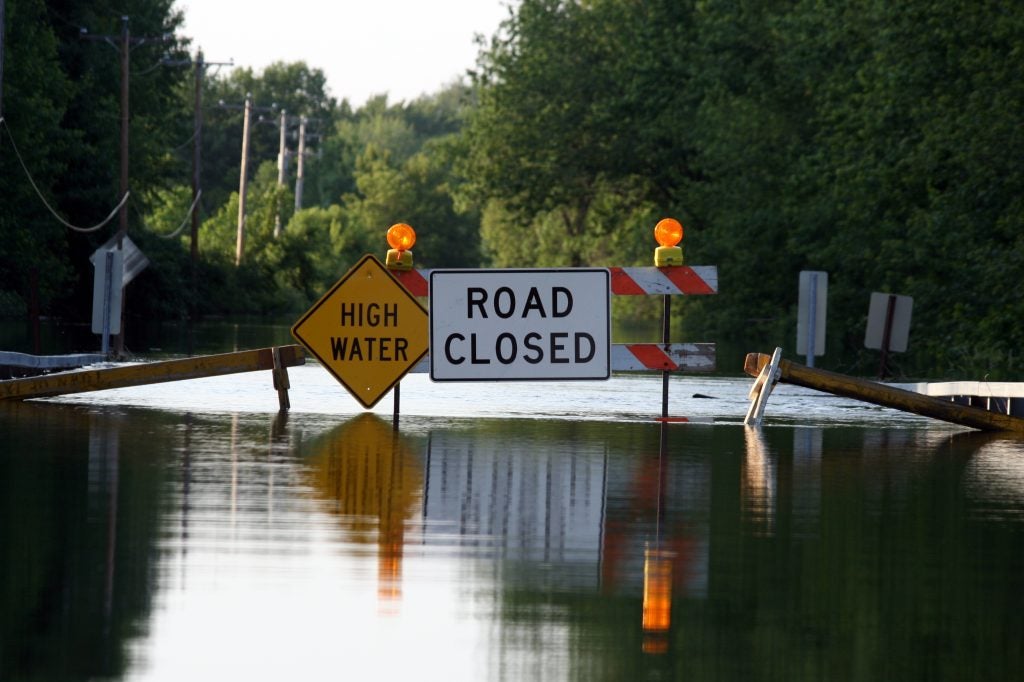When making any decision, we often find ourselves weighing the pros and cons of an action – the benefits versus the cost. The official practice, referred to as “benefit-cost analysis,” is not only used by individuals and businesses, but also by the federal government when determining funding for a program or initiative. In simple terms, when the benefits exceed the cost of an investment, federal funding may be made available.
But oftentimes benefit-cost analysis doesn’t look at the full picture, neglecting to consider who benefits from an investment and who bears the brunt of its cost. This is true when examining the nation’s flood risk management strategy. Historically, the annual loss from flood damage disproportionately impacts low-income communities and communities of color, leaving those with fewer resources less protected.
By 2050, flood risk is expected to increase by at least 26% – and if we want fair solutions for managing this, it’s critical to integrate equity into financial decision making. EDF held a workshop where experts provided guidance on how the U.S. Army Corps of Engineers (USACE), a federal agency that works on flood risk management, can integrate equity into their benefit-cost analyses. Here are their top five recommendations:
1. Define a disadvantaged and underserved community
The USACE first needs to adopt a clear definition of what a disadvantaged and underserved community is with respect to flood risk and social factors that contribute to vulnerability to flood risk.
The USACE should issue guidance on how this definition should reflect specific regional factors, such as cost of living, urban versus rural and the needs of local populations. To do this, they should consult with agencies that already have a clear definition of “disadvantaged community” and use existing tools and resources.
Once the USACE adopts a definition, it will be easier to provide consistency when defining such communities across jurisdictional boundaries and feasibility studies.
2. Break down benefit-cost analysis across subpopulations
To get a clear understanding of the trade-off between efficiency and equity, it is recommended to look at benefit-cost analyses across all subpopulations. An analysis of benefits for each subpopulation is easy for the USACE to compute and will provide a better understanding of the tradeoff between efficiency and equity.
The USACE should consider distributional equity when selecting flood risk mitigation alternatives, and this comprehensive approach will help examine how benefits vary by income, race, social vulnerability, etc. Additionally, it will help meet the Justice40 goals, set forth by the Biden administration, or future decision rules that identify desired levels of equity.
3. Include all relevant costs in the benefit-cost analysis
In addition to what is already estimated in the USACE benefit-cost analysis, there should also be inclusion of all estimated lost incomes or wages, emergency costs, excess household expenditures or borrowing costs, etc. These are hefty costs, and in many cases, a dollar in low-income communities means more than in high-income areas. The USACE should consider how these costs accrue in disadvantaged communities.
While these costs are often difficult to estimate, utilizing direct interviews and empirical post-flood studies provides the most appropriate data to estimate losses.
4. Consider alternative benefit valuations that include equity weights
A USACE benefit-cost analysis currently estimates the benefit from a variety of flood risk reduction options, but ultimately, will recommend the one with the largest return. However, maximizing returns doesn’t necessarily do what is best for societal well-being.
It is recommended that the USACE adjusts their current approach to more accurately reflect society’s preferences for equity. An alternative valuation is to estimate the expected damages and apply equity weights to the cost-benefit ratio, incorporating the diminishing marginal utility of income.
Presenting this alternative, alongside the current benefit-cost ratios, may help integrate equity and offer additional information when collaborating with non-federal sponsors, state and local governments.
5. Enable community engagement by providing resources and identifying barriers
To enable more communities to engage in feasibility studies, it is recommended the USACE provides capacity-building resources.
Additionally, the USACE should be aware of barriers that may prevent smaller disadvantaged communities from initiating or maintaining funding for feasibility studies. Currently the USACE requires all non-federal sponsors, including disadvantaged communities, to pay for 50% of a feasibility study. This can end up costing up to $1.5 million and ultimately may discourage certain groups or communities from engaging in a study.
By implementing these recommendations, experts believe the USACE can better incorporate equity into flood management benefit-cost analyses – and ultimately increase protection from flood risk and provide greater access to resources.










